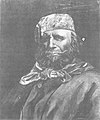Wékpo:Francisco Félix de Souza.jpg

Djlɛ nu mɔ sɛ ɖo élɔ tɔn:Ɖiɖe ɔ sín gaɖiɖí: 498 × 599
Djlɛ ɖévo lɛ: Ɖiɖe ɔ sín gaɖiɖí: 199 × 240 | Ɖiɖe ɔ sín gaɖiɖí: 399 × 480 | Ɖiɖe ɔ sín gaɖiɖí: 638 × 768 | Ɖiɖe ɔ sín gaɖiɖí: 1 176 × 1 415.
Wémá dodo ɔ (1 176 × 1 415 pixels, file size: 495 kio, MIME type: image/jpeg)
Ɖyɔ́ɖyɔ́ é bló ɖó wémá ɔ wu é
Zín azan alo gánmɛ ɔ bo nan do kpɔn wéma lé é ɖé ɖo gán énɛ mɛ é.
| Azǎn/Ganmɛ | Kówún tɔn | Aɖa tɔn lɛ | Nuzantɔ | Nɛ | |
|---|---|---|---|---|---|
| ɖin | 21 xwejísùn 2017 à 20:46 |  | 1 176 × 1 415 (495 kio) | Denarivs | original |
| 7 abɔxwísùn 2010 à 20:27 |  | 468 × 561 (164 kio) | Missionary | digitally removed mouse pointer | |
| 1 zǒsùn 2008 à 04:47 |  | 468 × 561 (135 kio) | Quissamã | ||
| 1 zǒsùn 2008 à 04:43 |  | 468 × 561 (135 kio) | Quissamã | {{Information |Description={{en|1=Francisco Félix de Souza, the Chachá of Ouidah}} |Source=Centro de Estudos Africanos |Author=Unknown |Date=before 1849 |Permission={{PD-Brazil-media}}-{{PD-Art}}{{PD-US}} |other_versions= }} <!--{{ImageUpload|full}}--> |
Wémá ɔ zizán
Wéma élɔ ɖo wépko élɔ zan wɛ:
Wéma ɔ zizán tɔn
Wikis élɔ lɛ ɖo wékpo élɔ zan wɛ:
- Lě e nɔ zán ar.wikipedia.org gbɔn é
- Lě e nɔ zán ca.wikipedia.org gbɔn é
- Lě e nɔ zán de.wikipedia.org gbɔn é
- Lě e nɔ zán en.wikipedia.org gbɔn é
- Lě e nɔ zán eu.wikipedia.org gbɔn é
- Lě e nɔ zán fi.wikipedia.org gbɔn é
- Lě e nɔ zán fi.wikibooks.org gbɔn é
- Lě e nɔ zán fr.wikipedia.org gbɔn é
- Lě e nɔ zán hy.wikipedia.org gbɔn é
- Lě e nɔ zán pt.wikipedia.org gbɔn é
- Lě e nɔ zán ru.wikipedia.org gbɔn é
- Lě e nɔ zán sv.wikipedia.org gbɔn é
- Lě e nɔ zán vi.wikipedia.org gbɔn é
- Lě e nɔ zán www.wikidata.org gbɔn é



